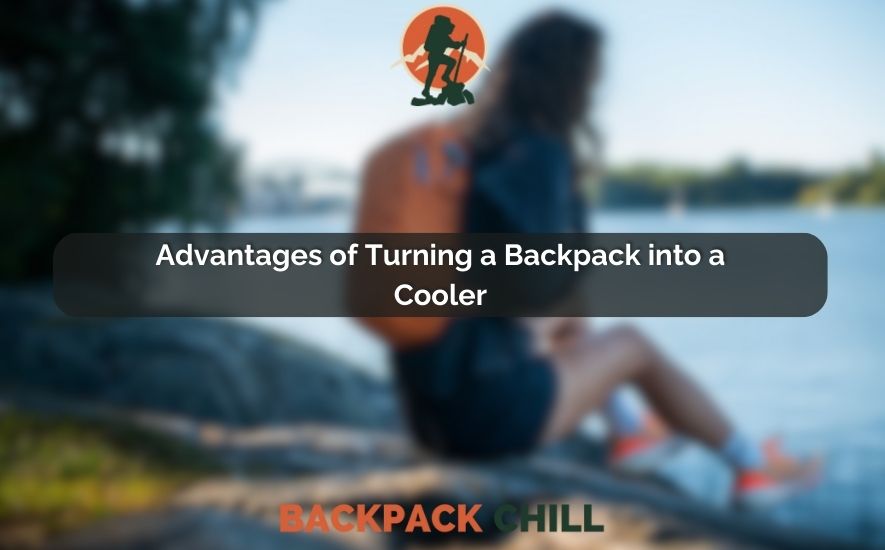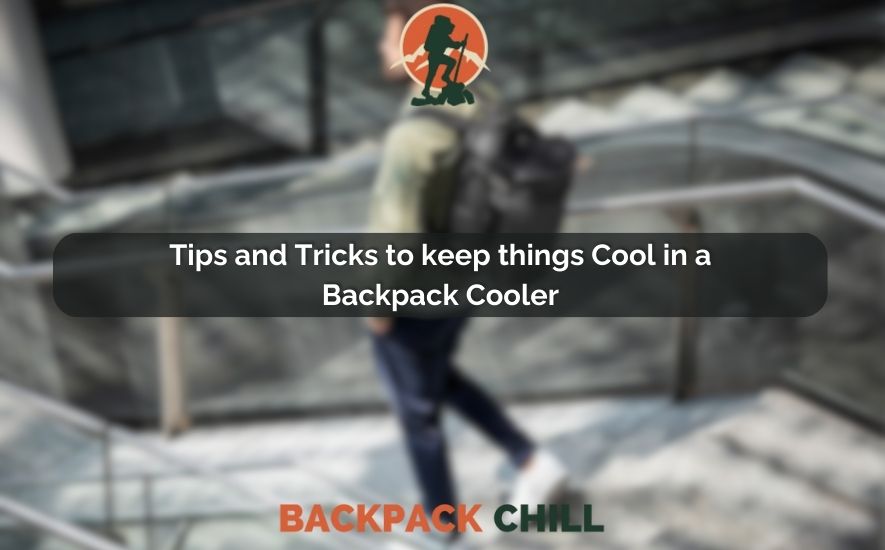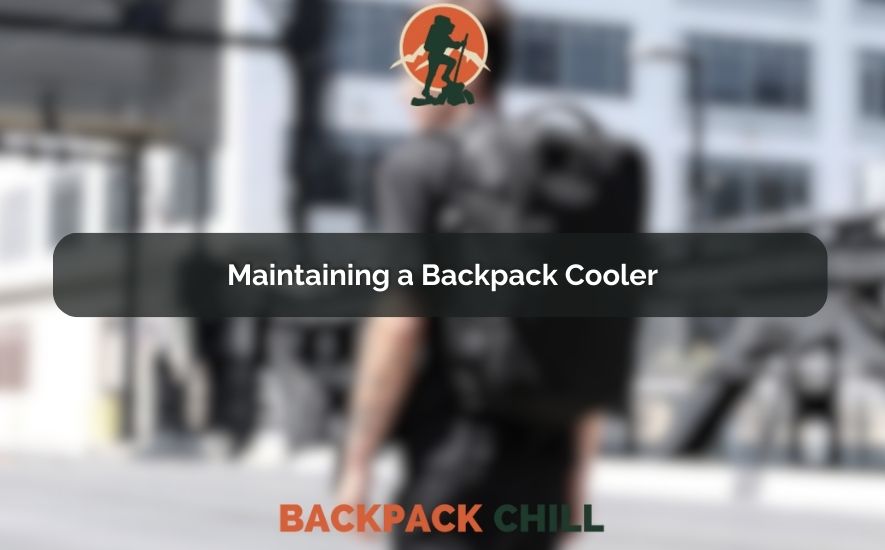Physical Address
304 North Cardinal St.
Dorchester Center, MA 02124

Are you tired of lugging around a separate cooler during your outdoor adventures? Wouldn’t it be convenient to have a backpack that doubles as a cooler, keeping your drinks and snacks refreshingly cold? Well, you’re in luck! In this article, we’ll explore a creative and practical solution to transform your ordinary backpack into a functional cooler.
How To Turn A Backpack Into A Cooler? To turn your backpack into a cooler, you’ll need a few key items: an insulated cooler insert or liner, a waterproof lining, some sturdy adhesive, and basic sewing supplies. First, measure the dimensions of your backpack’s main compartment and cut the insulated cooler insert or liner to fit.
With just a few simple steps and some easy-to-find materials, you’ll be able to enjoy chilled beverages and tasty treats on the go without the hassle of carrying an additional cooler. Whether you’re planning a hiking trip, a picnic in the park, or a day at the beach, this backpack cooler conversion will make your outdoor experiences more enjoyable and convenient.
To create a cooling backpack, it’s crucial to comprehend the underlying mechanism. The core principle involves utilizing advanced cooling technologies to regulate temperature and maintain a comfortable environment inside the bag. These technologies include thermoelectric cooling, evaporative cooling, or even integrated mini fans.
Choosing the appropriate backpack is the foundation of creating your cooling companion. Look for backpacks that are designed with cooling features in mind. Opt for materials that are lightweight, breathable, and moisture-wicking, allowing better airflow and preventing discomfort caused by perspiration.
One popular method of cooling is thermoelectric cooling. This technology uses the Peltier effect to transfer heat from one side of the device to the other, thereby creating a cooling effect. By integrating thermoelectric cooling modules into the backpack’s design, you can ensure a constant flow of cool air, making it an ideal solution for beating the heat.
Another effective cooling technique is evaporative cooling. This method utilizes the principle of heat absorption through evaporation, providing a natural and refreshing cooling sensation. By incorporating evaporative cooling elements into your backpack’s design, you can enjoy the benefits of this eco-friendly and energy-efficient cooling mechanism.
For those seeking a more direct and customizable cooling solution, integrating mini fans and ventilation systems into your backpack can provide instant relief. These small, compact fans can be strategically placed to provide targeted airflow and help you stay cool, even in the hottest weather conditions.
A cooling backpack requires a reliable power source to operate the cooling mechanisms effectively. Look for backpacks that offer energy-efficient solutions, such as rechargeable batteries or solar panels. This ensures that your cooling companion remains functional for extended periods without relying on external power sources.
Apart from keeping you cool during outdoor activities, a cooling backpack has several practical applications. It can be a valuable asset for hikers, cyclists, travelers, students, and even professionals commuting to work. By incorporating cooling features into your backpack, you can maintain comfort and productivity throughout the day.
To ensure your cooling backpack remains in optimal condition, regular maintenance is essential. Follow the manufacturer’s instructions for cleaning and storing the backpack. Keep in mind that each cooling technology may have specific care requirements, so it’s crucial to familiarize yourself with the recommended guidelines.

The primary advantage of a backpack cooler lies in its convenience and portability. By integrating cooling capabilities into a backpack design, users can easily carry their belongings while keeping their food and beverages cool.
The backpack’s adjustable straps distribute the weight evenly, ensuring comfort even during extended journeys. This multifunctional design eliminates the need for carrying separate cooler bags, providing a hassle-free experience.
Backpack coolers are designed with efficient insulation, enabling them to maintain the desired temperature for an extended period.
Advanced insulation materials and techniques help retain cold temperatures, ensuring that your perishable items stay fresh for hours. This feature is especially valuable for outdoor enthusiasts who spend long durations away from refrigeration options.
Another advantage of transforming a backpack into a cooler is the ample storage capacity it provides. These backpacks often offer multiple compartments and pockets, allowing you to organize your belongings efficiently.
In addition to the cooling section, you can utilize the other compartments for carrying personal items, such as utensils, napkins, sunscreen, and other essentials, making it a practical solution for outings.
Backpack coolers are typically crafted from durable and weather-resistant materials. They are designed to withstand the rigors of outdoor activities, ensuring longevity and reliable performance.
The robust construction and waterproof features protect your food and drinks from external elements, such as rain or accidental spills, providing peace of mind during your adventures.
Opting for a backpack cooler contributes to environmental sustainability. By eliminating the need for disposable coolers and single-use plastic bags, you actively reduce waste and minimize your ecological footprint. Choosing a reusable and multifunctional backpack cooler promotes eco-conscious habits while enjoying the benefits of a practical and innovative product.

Before packing your cooler, it’s essential to pre-chill it. This step helps to eliminate any residual heat and ensures a cooler environment for your items. Place ice packs or frozen water bottles inside the cooler for a few hours before use. This will create a cold base, enhancing the overall cooling efficiency.
Air gaps can hinder the cooling process as they allow warm air to enter the cooler. To reduce air gaps:
Direct sunlight and exposure to high temperatures can rapidly warm up your backpack cooler. To prevent this:
Frequent opening of the cooler can cause the cold air to escape, resulting in reduced cooling efficiency. Follow these suggestions:
Over time, ice packs will gradually lose their cooling capacity. Refreshing them during long outings can help maintain the desired temperature. Consider carrying extra ice packs and swapping them out as needed.
The insulation properties of your backpack cooler play a crucial role in keeping things cool. Inspect your cooler periodically for any wear or damage to the insulation. If necessary, consider investing in a high-quality cooler with excellent insulation to ensure optimal cooling performance.

A backpack cooler is a convenient and portable solution for keeping your food and drinks cool while on the go. To ensure its longevity and optimum performance, proper maintenance is essential.
Regular cleaning is crucial to prevent the buildup of dirt, mold, and unpleasant odors in your backpack cooler. Follow these steps to clean your cooler properly:
Proper storage of your backpack cooler is essential to maintain its integrity and functionality. Consider the following points when storing your cooler:
To maintain the longevity of your backpack cooler, it’s important to handle it with care. Follow these guidelines:
In conclusion, transforming a backpack into a cooler can be a fun and innovative DIY project for those seeking to optimize their outdoor adventures. By incorporating a few key modifications and utilizing simple materials, such as insulating foam and a waterproof liner, you can effectively convert your backpack into a reliable cooler.
Yes, you can certainly use an insulated bag as a cooler. Insulated bags are designed to maintain temperature, whether it’s to keep items warm or cold. While they may not have the exact same cooling power as dedicated coolers, they can still be effective in keeping your food and drinks cool for a short period.
Insulated bags are often lightweight, portable, and come in various sizes, making them convenient for picnics, day trips, or even grocery shopping. Just make sure to include some ice packs or frozen gel packs to enhance the cooling capability of the insulated bag.
A backpack cooler offers a versatile solution for keeping your items cool while on the move. When packing a backpack cooler, consider including perishable food items such as sandwiches, fruits, vegetables, yogurt, or cheese. You can also bring chilled beverages like water, juice, soda, or even canned or bottled drinks.
It’s a good idea to pack your food and drinks in sealed containers or zip-lock bags to prevent any leakage. Additionally, you may want to include ice packs or frozen gel packs to ensure that the temperature inside the backpack cooler remains low and your items stay fresh for an extended period.
If you don’t have access to a traditional cooler, there are several alternatives you can use to keep your items cool. One option is to utilize a large plastic container or bin. Place your items inside the container, along with ice or frozen gel packs, and close the lid tightly to create a makeshift cooler.
Another option is to use a metal or plastic bucket, which can be lined with a plastic bag or a waterproof material to hold the ice and your items. You can also repurpose a Styrofoam or cardboard box by adding insulation material like bubble wrap or towels to keep the cold air inside. Remember to keep the container sealed as much as possible to maintain the cooling effect.
Cooler bags typically use a variety of insulating materials to maintain the temperature of the contents. One common material is closed-cell foam insulation, which is known for its excellent thermal properties. Closed-cell foam is lightweight, water-resistant, and provides effective insulation by trapping air within its cells.
These fabrics are often layered and reinforced to enhance insulation and durability. Some cooler bags may also incorporate reflective materials or aluminum foil lining, which helps to reflect heat and maintain the internal temperature. The specific combination of materials can vary depending on the brand and design of the cooler bag.